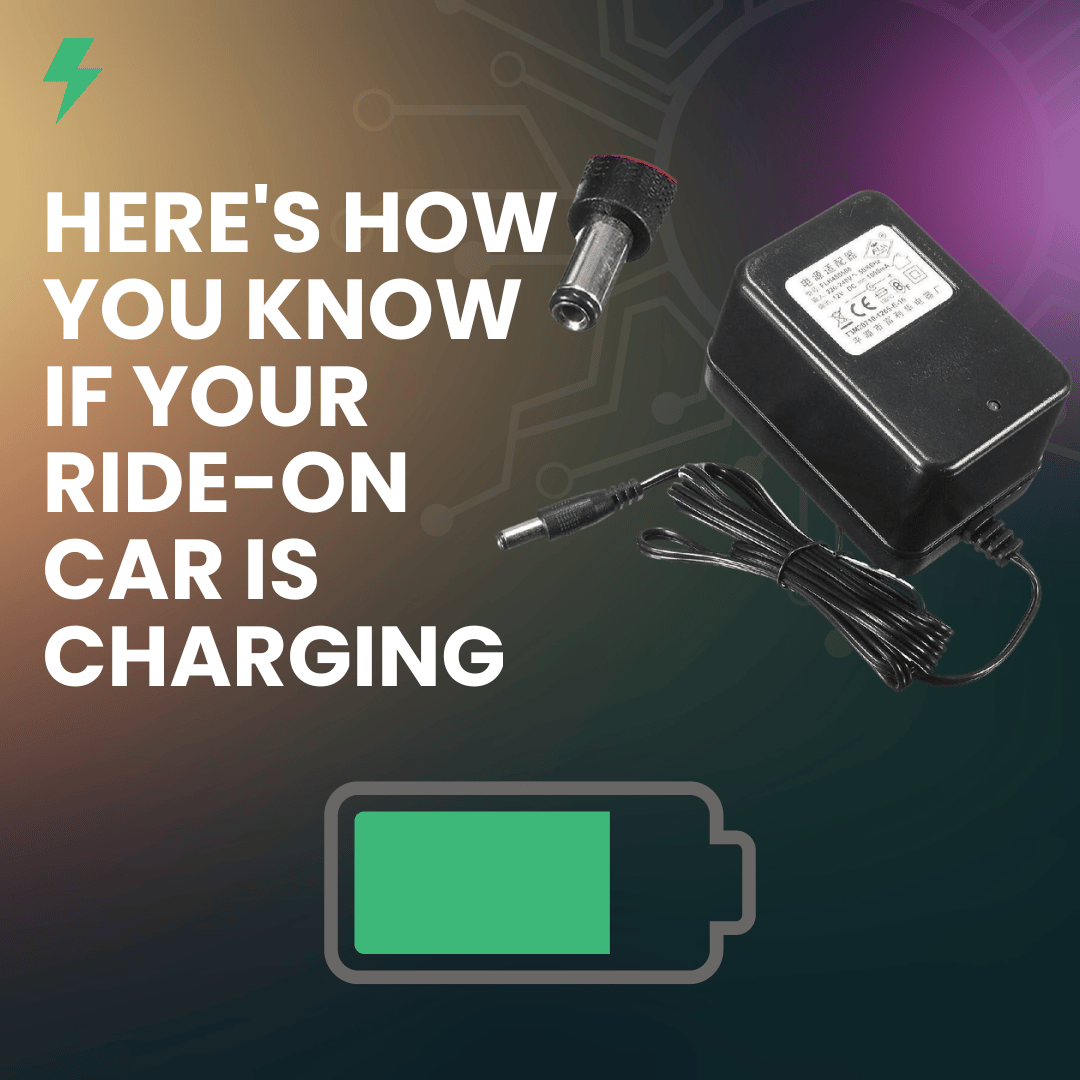Published: July 7, 2023
Updated: March 21, 2025
Here’s How You Know If Your Ride-On Car Is Charging
Your kid’s ready for a ride-on adventure, but the car won’t budge—flat battery blues again!  Don’t let charging woes stall the fun. Here’s how to tell if it’s powering up—and keep it rolling.
Don’t let charging woes stall the fun. Here’s how to tell if it’s powering up—and keep it rolling.
The Quick Answer
Your ride-on car is charging if the charger’s LED light is red (charging) and turns green (full), or if the charger feels warm after a few hours. These signs cut the guesswork so your little driver’s back in action fast.
Know Your Battery Basics
The battery’s the heart of the ride-on. Most use 6V, 12V, or 24V—check your manual. Learn more about battery lifespan to keep it humming.
Spot the Charging Signs
Here’s how to confirm it’s juicing up:
- LED Light: Red means charging; green means done. No light? Trouble’s brewing.
- Charger Warmth: A slight heat after a couple of hours shows it’s working—normal, not scorching.
- Power Meter: If your model has one, a rising gauge signals a charge.
Tip: Don’t overcharge—8-12 hours max for 12V, 10-18 for 24V. Too long fries the battery. See charging times.
Troubleshooting Tips
No charge? Check these:
- Battery: Feel for warmth (carefully)—if it’s cold and the LED’s off, it might be dead.
- Charger: Inspect wires and plugs. Too hot or no heat? Time for a replacement.
More fixes in our charger troubleshooting guide.
Keep That Battery Happy
A little care goes a long way:
- Charge Smart: Full discharge, then charge—don’t overdo it. More maintenance tips here.
- Store Right: Cool, dry spot, no sun or frost.
- Check Up: Look for corrosion or loose wires monthly.
Wrap-Up
Charging’s simple when you know the signs—LEDs, warmth, and a bit of TLC. Keep your ride-on ready for endless fun! Need help? Browse our ride-ons or chat with us.
Frequently Asked Questions
How do I know if my ride-on car is charging?
Look for a red LED on the charger (charging) that turns green (full), or a warm charger after a few hours.
What if the charger light doesn’t turn on?
Check connections—loose wires or a dead charger might be the culprit. Test with a new one if needed.
How long should I charge my ride-on?
6-10 hours for 6V/12V, 10-18 for 24V—don’t go past to avoid overcharging.





Share:
Does Body Weight Matter in Go-Karts? (Updated 2025)
How Fast Is a 125cc Go-Kart?